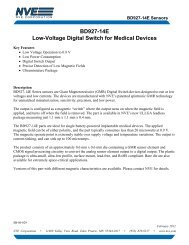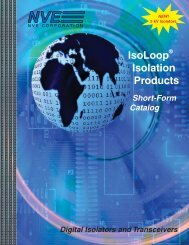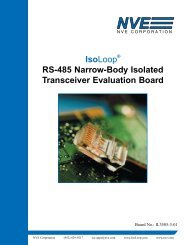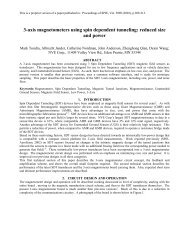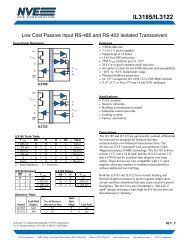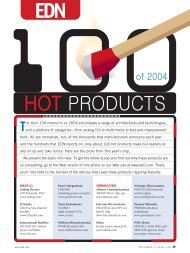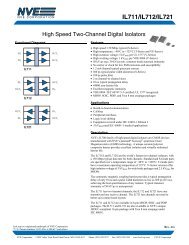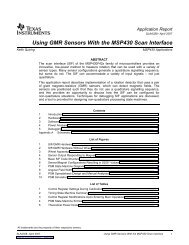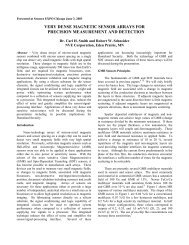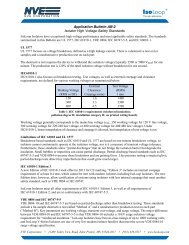Magnetoresistive Random Access Memory (MRAM) Technology (.pdf)
Magnetoresistive Random Access Memory (MRAM) Technology (.pdf)
Magnetoresistive Random Access Memory (MRAM) Technology (.pdf)
You also want an ePaper? Increase the reach of your titles
YUMPU automatically turns print PDFs into web optimized ePapers that Google loves.
<strong>Magnetoresistive</strong> <strong>Random</strong> <strong>Access</strong> <strong>Memory</strong> (<strong>MRAM</strong>)<br />
By James Daughton<br />
Copyright © 2/4/00<br />
Iy<br />
Operate Points<br />
Iy<br />
Ix<br />
Selected Cell<br />
No Switch<br />
• Ix, Iy Alone Doesn’t Switch Cell<br />
• Ix, Iy Together Switch Cell<br />
Figure 1. 2-D Magnetic <strong>Memory</strong> Cell Array And Selection Of Cell.<br />
These early memories (mostly magnetic core memories) used inductive<br />
signals for determining the storage state (“1” or “0”). A magnetic field (current)<br />
was used to “interrogate” the memory element, and the polarity of induced<br />
voltages in a sensing circuit depended on whether a “1” or “0” was stored.<br />
The first to propose a magneto-resistive readout scheme was Jack Raffel [1].<br />
His scheme stored data in a magnetic body, which in turn produced a stray<br />
magnetic field that could be detected by a separate magnetoresistive sensing<br />
element. The concept was not high density because it was difficult to get a<br />
sufficiently large external stray field from a small magnetic storage cell. This<br />
scheme of separating the magnetic storage element from the sensor has<br />
similarity with the schemes recently proposed for magnetized bodies sensed by<br />
Hall effect sensors [2].<br />
The first technology which used a magnetic element for storage and also<br />
used the same element for magnetoresistance readout was the Cross-tie<br />
Ix<br />
Contact: Jim Daughton: tel. (952) 996-1607 or email: daughton@nve.com<br />
Page 2 of 13



